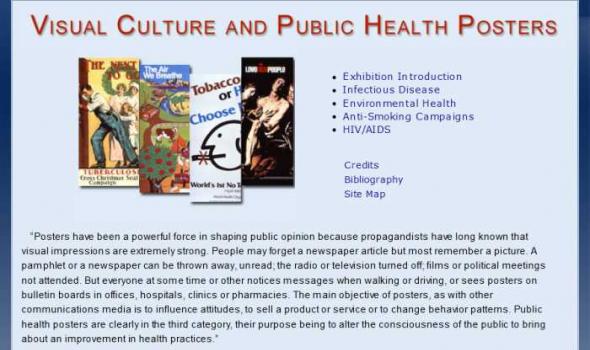Category: Business & Reference, Health, United States
Results
History of Medicine America's Tea Craze . . . from a medical standpoint, our preference is emphatically for coffee. Contrast the vigorous, refreshing odor and flavor of a good cup of coffee with the delicate and insipid taste of even a high grade tea; contrast the clear complexion and physical aspect of the individual whose morning meal is a bowl of diluted coffee and who takes his after-dinner cup, with the nervous, emaciated, habitually constipated dyspeptic whose "eye-opener" and "night cap" is tea, and all reason for argument as to our preference ends . JAMA. 1897 Nov 6;29(19):972 , , , , U.S.
History of Medicine Exhibition Introduction This online exhibit is designed to introduce you to the history of images used in public health posters in the twentieth century. It utilizes the world's largest collection of poster art dealing with questions of health in the United States, housed at the National Library of Medicine. Many of these images can also be viewed through the Images from the History of Medicine (IHM) homepage. The exhibit is divided into two sections that focus on infectious diseases and environmental health concerns, revealing how posters provide an effective medium for communicating information about disease, identifying risk factors, and promoting behavioral change.
History of Medicine Introduction The National Library of Medicine has recently acquired a large collection of Chinese Public Health materials, about seven thousand items produced from early 20th century to the year of SARS. The collection has a wide range of media presentations: posters, health newsletters, health newspapers, paintings, pharmaceutical advertisements, calendars, children's chess games, jigsaw puzzles on health topics, playing cards on SARS, lantern slides, negatives, photographs, and health award certificates, as well as books and journals. These materials present rich visual representations of public health concerns which were closely tied to the political, social, economic, and even military engagements of China during different time periods.
History of Medicine Public Health And War Public health and war have long been close companions, and maybe strange bedfellows. Starting with the Crimean War, and then the first terrible round of "modern wars" -- the American Civil War, the Franco-Prussian War and World War I -- military officials and civilian leaders called on health professionals and volunteers to help mobilize and protect military forces and civilian populations. Health professionals and volunteers, in turn, viewed war as an opportunity to test and implement their theories, as an opportunity to use newly discovered knowledge and newly invented technologies -- and eagerly jumped on war bandwagons to advance their professional, scientific, political and ideological goals.
History of Medicine Chinese medicinal compounds were recorded as early as the Han dynasty, 2,000 years ago. Beginning in the 1880s, Western companies – notably Bayer, Hoechst (now Aventis), and Eli Lilly – challenged traditional medicine with the resources of modern capitalism. In turn, Chinese companies entered the new commercial markets: the Tianjin Pharmaceutical Factory, founded in 1921, used western methods to produce and market traditional Chinese medicines. The sheets shown here advertise a mix of European and Asian products, using ideal feminine and masculine images as well as the Tian An Men (Gate of Heavenly Peace). Ads for progesterone and methyltestosterone show the appeal of potent over-the-counter hormone therapies. 21 April 2010
History of Medicine Introduction 引言 Tuberculosis was one of the major epidemic diseases in 20th-century China, along with smallpox, malaria, cholera, schistosomiasis, and other epidemics. Organized efforts to fight the disease began in 1933 when the National Anti-Tuberculosis Association of China was established. From 1950 through 1980, the Chinese government launched anti-tuberculosis campaigns as part of the national public health movement. The Anti-TB Association and the Red Cross played important roles in the health education campaigns. Health posters became an important tool to disseminate health knowledge and methods of prevention and treatment. The campaigns, along with the universal free healthcare, led to a significant decline of tuberculosis.


























